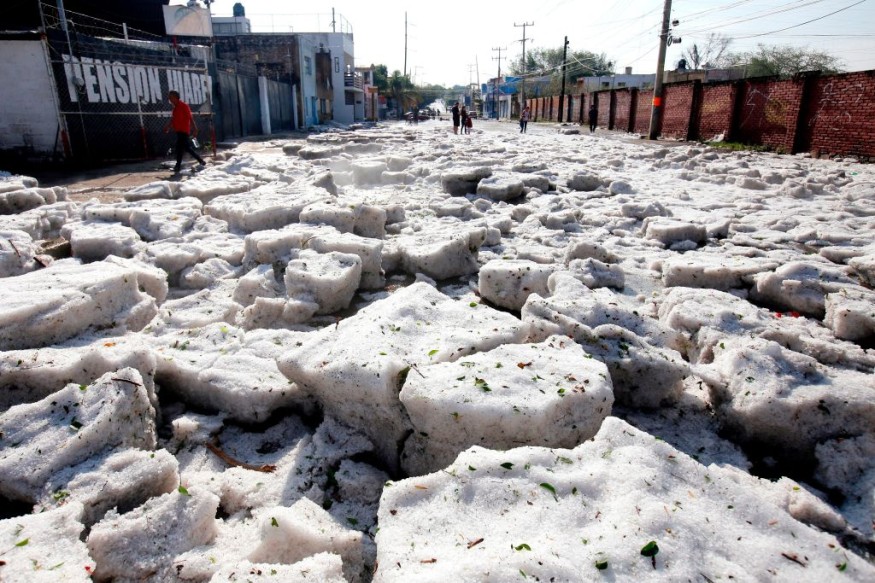Hailstones fell over South Florida on Monday, April 4, and over the weekend covering the ground with large chunks of ice some comparable to the size of a golf ball or a tennis ball.
Various social media posts show that large hail punctured the windows of cars and rooftops of houses.
Rare Florida Hailstorm

The recent downpour of hailstones in Florida is considered to be a rare occurrence in the Sunshine State.
According to the Miami Herald, severe storms resulted not only in the fall of giant ice balls but also in heavy rain and gusty winds.
Thunderstorms wreak havoc in parts of Florida, including Highlands County and Miami-Dade County.
The severe weather's most dangerous hazard the golf-sized hailstones, which caused damage to property.
In Sebring, hailstones damaged several vehicles, including a Volkswagen when its rear window was shattered with holes. In Avon Park, some homeowners in the city had their windows and house exterior smashed by hailstones, as per Miami Herald.
Regardless of the events, there were no casualties reported.
What is a Hail?
According to the National Oceanic and Atmospheric Administration (NOAA) - National Severe Storms Laboratory (NSSL), hail, also known as balls of ice or hailstones, is a manifestation of precipitation that forms inside a thunderstorm.
When hail is heavy enough, it can cause injury or death to humans and livestock, as well as damage to aircraft, houses, and vehicles.
Furthermore, although hail can kill a person, the risk of it is considered low. In the United States, only four people have been killed by hail since 2000, as per the US storm agency.
However, the lethality of the balls of ice will depend on their frequency and size, especially when they hit the head of an individual.
The largest hailstone ever recorded was found in Vivian, South Dakota, in 2010. The large hail had a diameter of eight inches weighing 1 pound (15 ounces).
How Do Hailstones Form?
Hailstones are formed when raindrops are lifted into the freezing atmosphere by updrafts of a thunderstorm.
The process allows the raindrops to freeze and gain mass, according to meteorologists from AccuWeather.
In addition, hailstones grow when they collide with liquid water drops that freeze on their surface.
Hailstones only fall from the sky when the thunderstorm updraft can no longer hold the weight of the ice balls.
However, not all hailstones fall and are pulled by gravity since smaller ice chunks can be blown away by horizontal winds.
Hotspots for Hail in the US
The recent weekend hailstorm in South Florida came after the weather forecast of a storm system and thunderstorms in the Southeast and Eastern US last week.
Although thunderstorms are common in Florida, hailstones are still considered unusual in the state.
In the US, most hailstorms occur in the states of Colorado, Nebraska, and Wyoming.
The triad meeting point of these locations is called the "hail alley" wherein an annual average of seven to nine hails transpires, as per the NOAA - NSSL.
© 2025 NatureWorldNews.com All rights reserved. Do not reproduce without permission.





